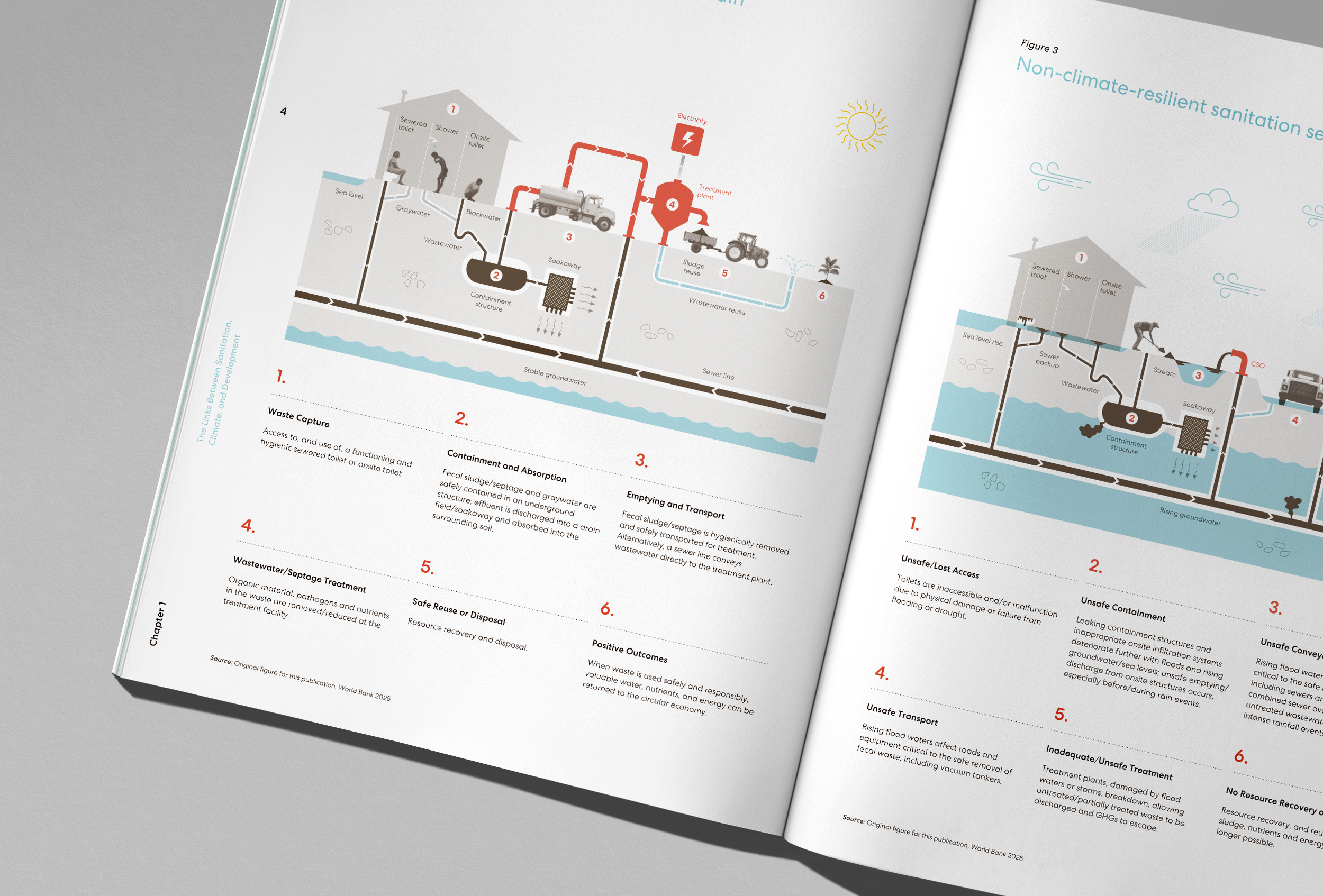Confronting the World’s Growing Sanitation Crisis
The need to address the world’s growing sanitation crisis, especially among our most vulnerable populations in low- and middle-income countries, has never been more critical. Poor sanitation poses a threat to billions of people worldwide, spreading infectious disease and malnutrition, stunting economic growth, blocking human development, and harming the environment. We know that investments in sanitation positively impact public health, but they also deliver strong economic returns, create jobs, and protect the environmental balance our planet depends on. This two-volume World Bank report begins with an in-depth look at the challenges and benefits of investing in urban sanitation systems for people, economic growth, and the planet, along with detailed policy, institutional, regulatory, and financing recommendations. The second volume—a background paper—presents an analysis of nine global case studies illustrating climate adaptation and mitigation strategies that have been used to accelerate progress towards universal access to safely managed and resilient sanitation systems and services.
Across both volumes, a variety of infographics and data visualizations—maps, tables, graphs, charts, etc.—are used to present new perspectives and insights, while larger more detailed diagrams, such as the Combined Sewer Overflow (shown above) and the Sanitation Service Chain (shown below) effectively illustrate and compare different sanitation workflows and processes. The unusual combination of mixing illustrations and digitally-drawn elements with realistic depictions of people, objects, and nature creates a unique juxtaposition that also adds context and provides a touch of realism. Information that is often perceived as banal and pedestrian is now shown as lively, dynamic, and easy to follow.
Reimagining the Planetary Boundaries presented another difficult design challenge. Introduced in 2014 by an esteemed group of scientists, the framework quantifies human impact thresholds by defining a safe operating space for humanity with the goal of preventing irreversible harm. Its use in the report identifies critical links between sanitation and seven of the nine boundaries. The layout of the original diagram, however, needed to be reformatted in order to elevate its effectiveness, and the previous set of symbols were too complex, too similar, and lacked distinction. The new configuration and the new icons (shown below)—now in color and more streamlined—bring clarity and cohesion to a framework that was greatly in need of simplification.
Throughout the entire report, a familial look emerges where graphic elements are smartly designed and appropriately integrated to achieve the right visual tone and personality. The font Centra, with its rounded features and evenly-weighted strokes, is a strong complement to the overall look-n-feel which is intelligent and fresh, but also modest and friendly. In the end, a robust and data-rich presentation is filled with beautifully rendered, eye-addictive visuals that are as intellectually compelling as they are aesthetically pleasing. Together, these ingredients help shape a powerful narrative.
































